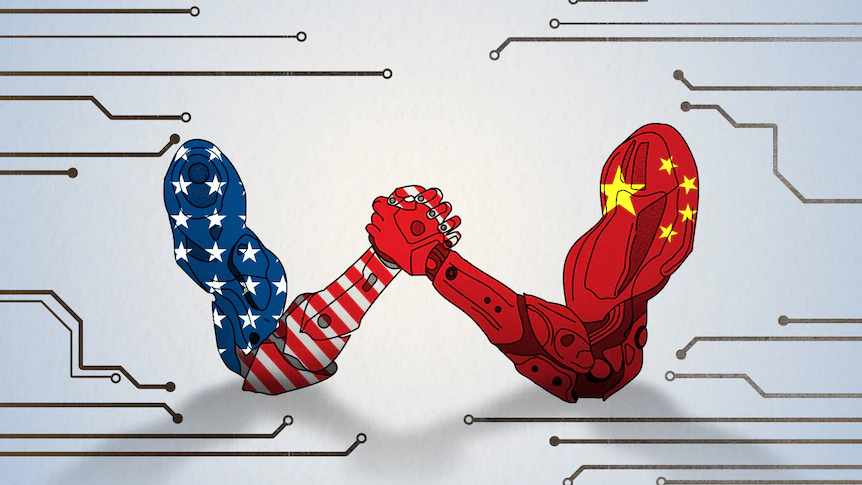The United States and China are locked in a technological arms race, each striving for dominance in critical areas such as artificial intelligence (AI), semiconductors, and telecommunications. This rivalry has far-reaching implications for global economies, security, and innovation.
Key Battlegrounds in the Tech War
- Semiconductors: Semiconductors are the backbone of modern technology, powering everything from smartphones to advanced AI systems. The U.S. has imposed restrictions on Chinese tech companies like Huawei, citing national security concerns. In response, China has accelerated its efforts to develop domestic semiconductor manufacturing capabilities to reduce reliance on Western suppliers.
- Artificial Intelligence: The U.S. leads in AI research, with institutions such as MIT and Stanford pioneering advancements. However, China is catching up rapidly, leveraging vast amounts of data and government-backed AI initiatives to drive innovation in facial recognition, autonomous systems, and smart cities.
- 5G and Telecommunications: China’s Huawei has been at the forefront of 5G development, challenging Western dominance in telecommunications infrastructure. The U.S. has responded by restricting Huawei’s access to critical technology and urging allies to exclude Chinese firms from their 5G networks.
Geopolitical and Economic Implications
The tech war has led to supply chain disruptions, increased trade tensions, and shifts in global alliances. Countries worldwide are being forced to align with either the U.S. or China on technology-related policies, creating a fragmented global tech landscape.
Both nations recognize the strategic importance of technological leadership, leading to increased investments in R&D, government-backed innovation programs, and talent acquisition strategies. This competition is likely to shape the global economy, determining which country will set the technological standards of the future.
Potential Areas for Collaboration
Despite their rivalry, the U.S. and China may find common ground in areas such as climate technology, cybersecurity cooperation, and space exploration. Collaborative efforts in these fields could help mitigate the negative impacts of their technological standoff while fostering global progress.
Conclusion
The battle for technological supremacy between the U.S. and China is reshaping the world’s economic and geopolitical landscape. Whether this competition leads to innovation or further division remains to be seen, but its outcomes will undoubtedly influence the future of global technology.

